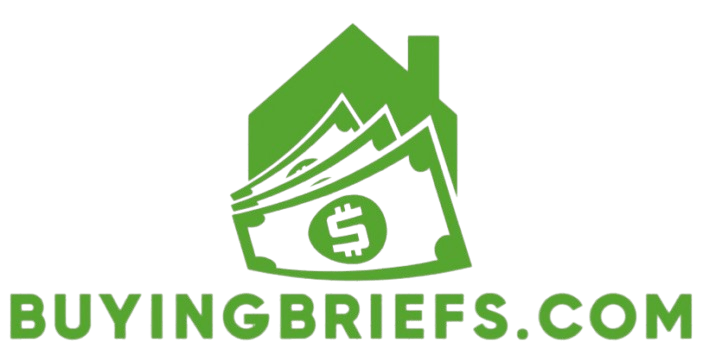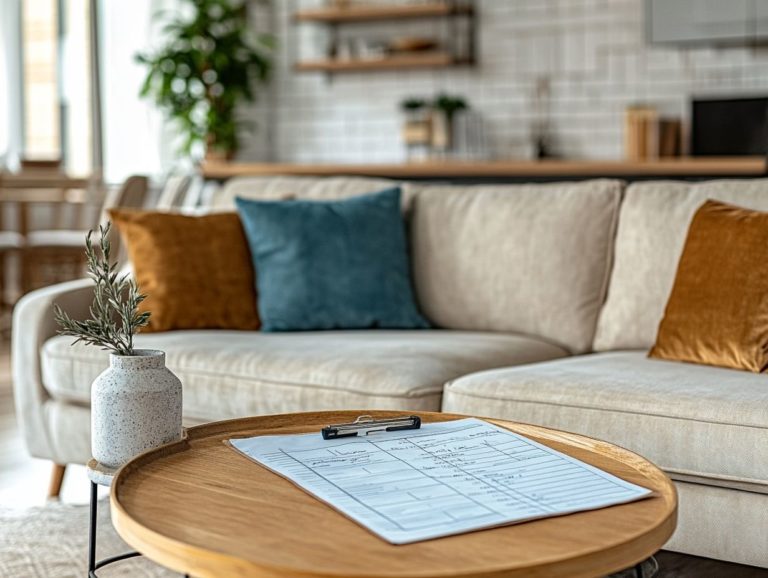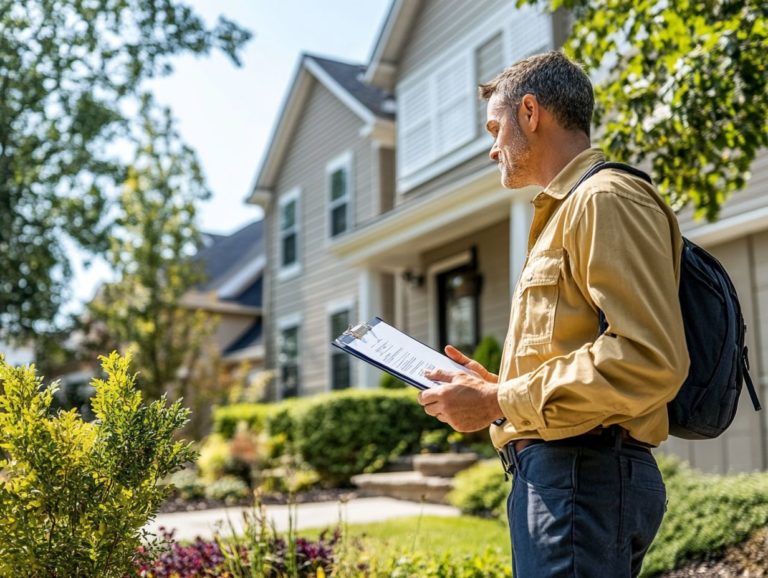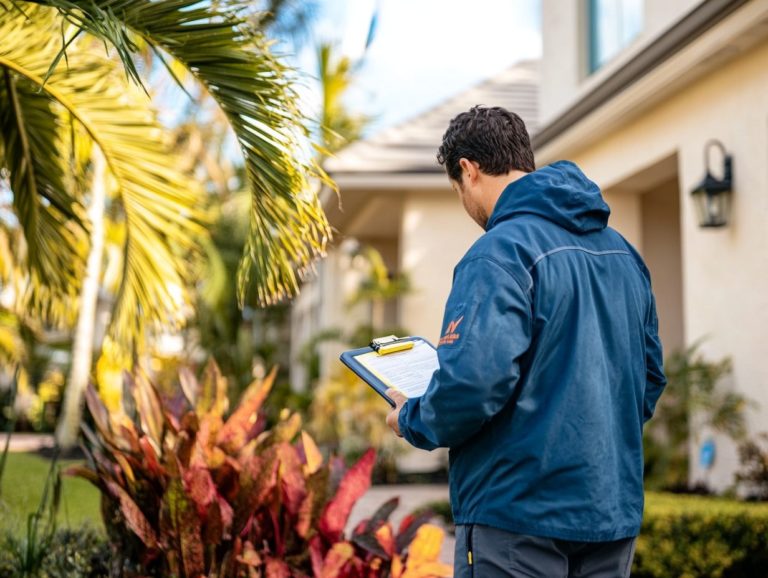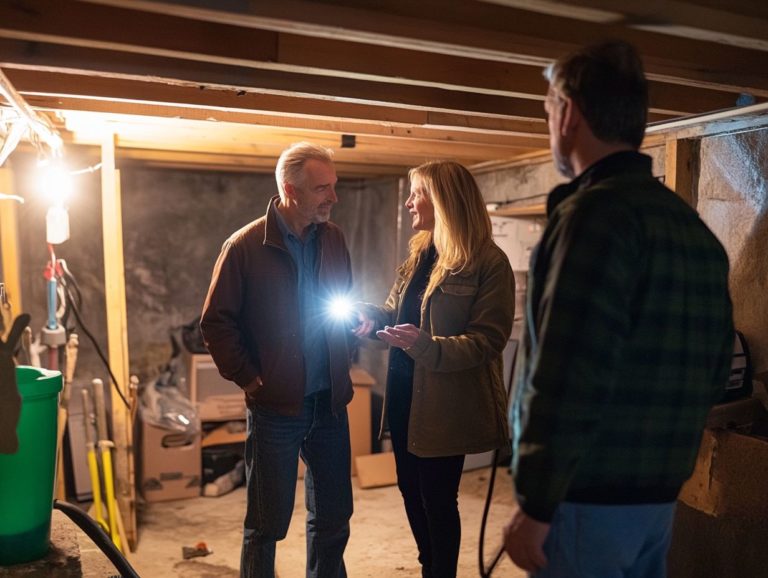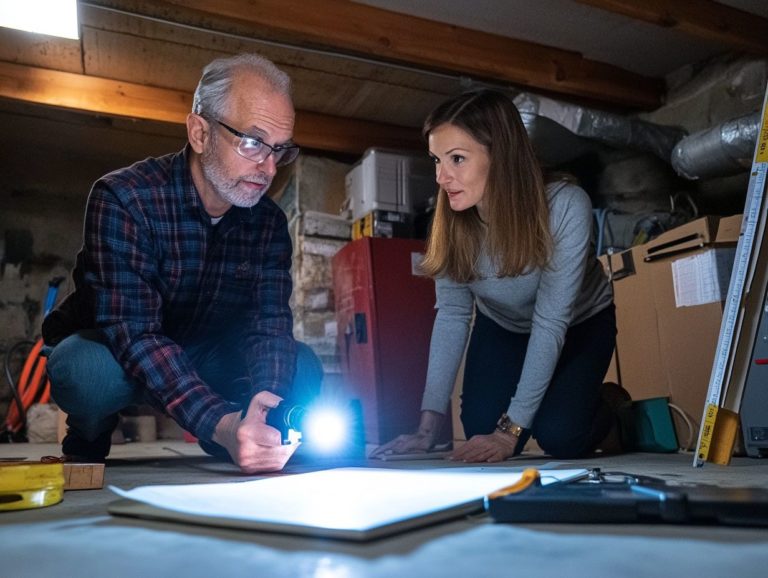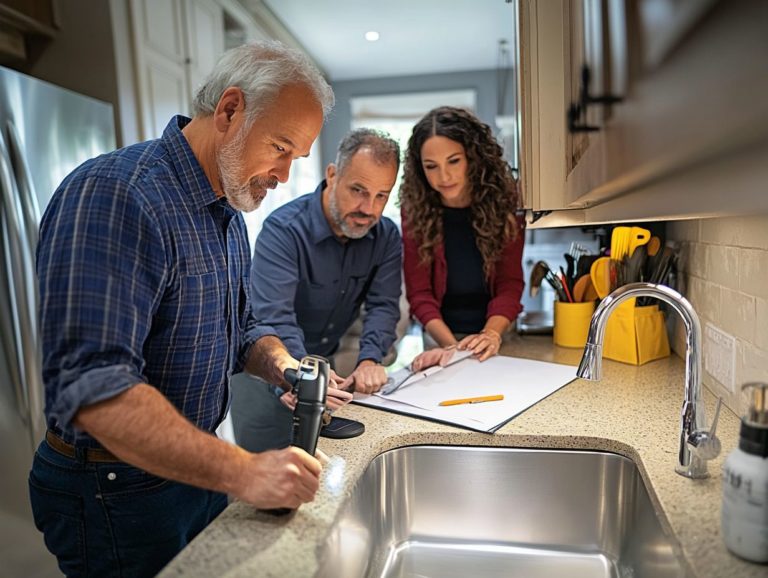Understanding Home Inspection Protocols
When you re buying or selling a home, having a solid grasp of the home inspection process can truly make a world of difference. Get ready to secure your investment!
This guide will help you navigate the essentials of home inspections, highlighting their purpose and significance alongside a step-by-step breakdown of the procedures involved. You ll explore the various types of inspections, what inspectors typically check, and how to interpret their findings.
You ll also find valuable tips for selecting the right home inspector to suit your needs. Whether you re a first-time buyer or a seasoned seller, this knowledge will empower you for a successful transaction.
Contents
- Key Takeaways:
- What is a Home Inspection?
- The Home Inspection Process
- Types of Home Inspections
- What Home Inspectors Look for
- Interpreting the Inspection Report
- Choosing a Home Inspector
- Frequently Asked Questions
- Why do we need home inspection protocols?
- Why is it important to understand home inspection protocols?
- What are some common items included in home inspection protocols?
- Who typically follows home inspection protocols?
- How do home inspection protocols differ from state to state?
- Can homeowners or buyers request specific items to be included in a home inspection?
Key Takeaways:
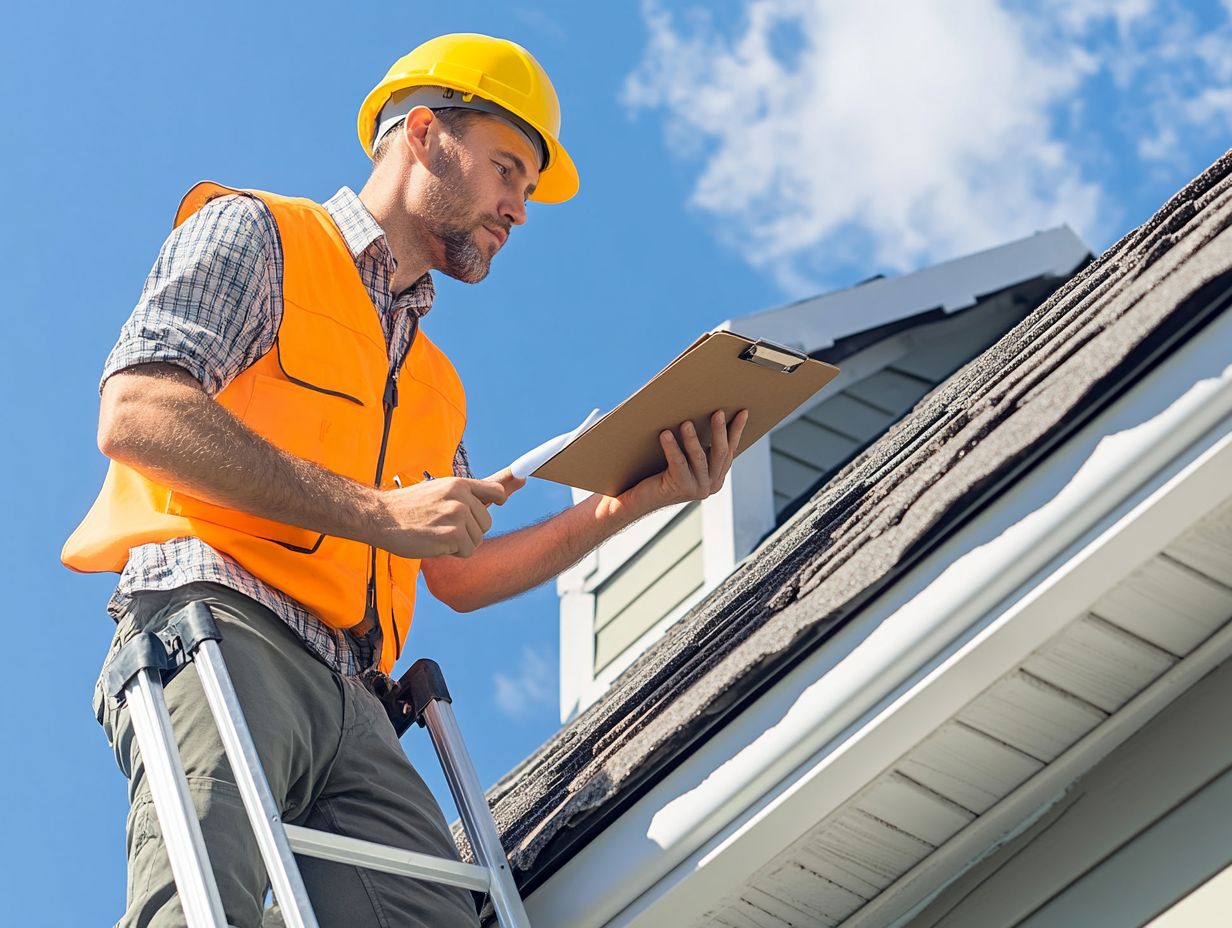
A home inspection is a thorough examination of a property’s condition and structure. This is an essential step in the home buying process.
The home inspection process typically includes a visual examination of the property, testing of systems and appliances, and a detailed report of findings, making it crucial to understand the basics of home inspections.
Home inspectors look for potential safety hazards, structural issues, and major defects in a property. It is important to carefully review and understand the inspection report to make informed decisions about the property.
What is a Home Inspection?
A home inspection is an in-depth examination of a property, typically carried out by a seasoned professional. Understanding the home inspector’s role is crucial, as this assessment finds any potential issues that might affect its value and safety.
As a vital component of the home buying journey, this process offers essential insights not just for you as a homebuyer, but also for mortgage lenders and real estate agents. The inspection report meticulously outlines the structural integrity of key home systems, including plumbing, electrical, roofing, and heating, ventilation, and air conditioning (HVAC).
This ensures that the property aligns with established inspection standards before you finalize your purchase.
Purpose and Importance
The purpose of a home inspection is to provide you with a detailed assessment of a property’s condition, pinpointing potential problems and necessary repairs that could impact its marketability and safety.
This process not only enlightens you about the true state of the home you’re considering purchasing but also highlights any urgent repairs that may require immediate attention.
A thorough inspection is an invaluable negotiating tool, often uncovering issues that can lead to price adjustments or requests for seller concessions. By understanding these factors, you empower yourself to make informed decisions about your investment, ensuring you’re not caught off guard by unexpected expenses after closing.
Addressing these concerns early can facilitate a smoother transaction, enhancing the overall experience for both you and the seller.
The Home Inspection Process
The home inspection process encompasses several essential steps—preparation, assessment, and reporting—each carefully designed to guarantee a comprehensive evaluation of the home’s systems and structural components. For more detailed information, check out what to know about home inspection policies.
This structured approach ensures that no detail is overlooked, providing you with a complete understanding of the property s condition.
Step-by-Step Guide
A comprehensive home inspection is a methodical process where you engage a professional inspector to analyze various home systems and structural components, culminating in an insightful inspection summary that highlights any findings.
This detailed assessment begins with preparation. The inspector reviews essential documents, such as property history and seller disclosures, to pinpoint potential areas of concern.
Upon arrival, the inspector meticulously evaluates critical components, including the roof, plumbing, electrical systems, and structural integrity. Each element is scrutinized for compliance with safety standards and functional efficiency, which is essential for understanding home inspection reports.
After the inspection, you receive a thorough report that not only details any discovered issues but also offers recommendations for repairs or further evaluations. This ensures that you have a clear and comprehensive understanding of your property s condition.
Types of Home Inspections
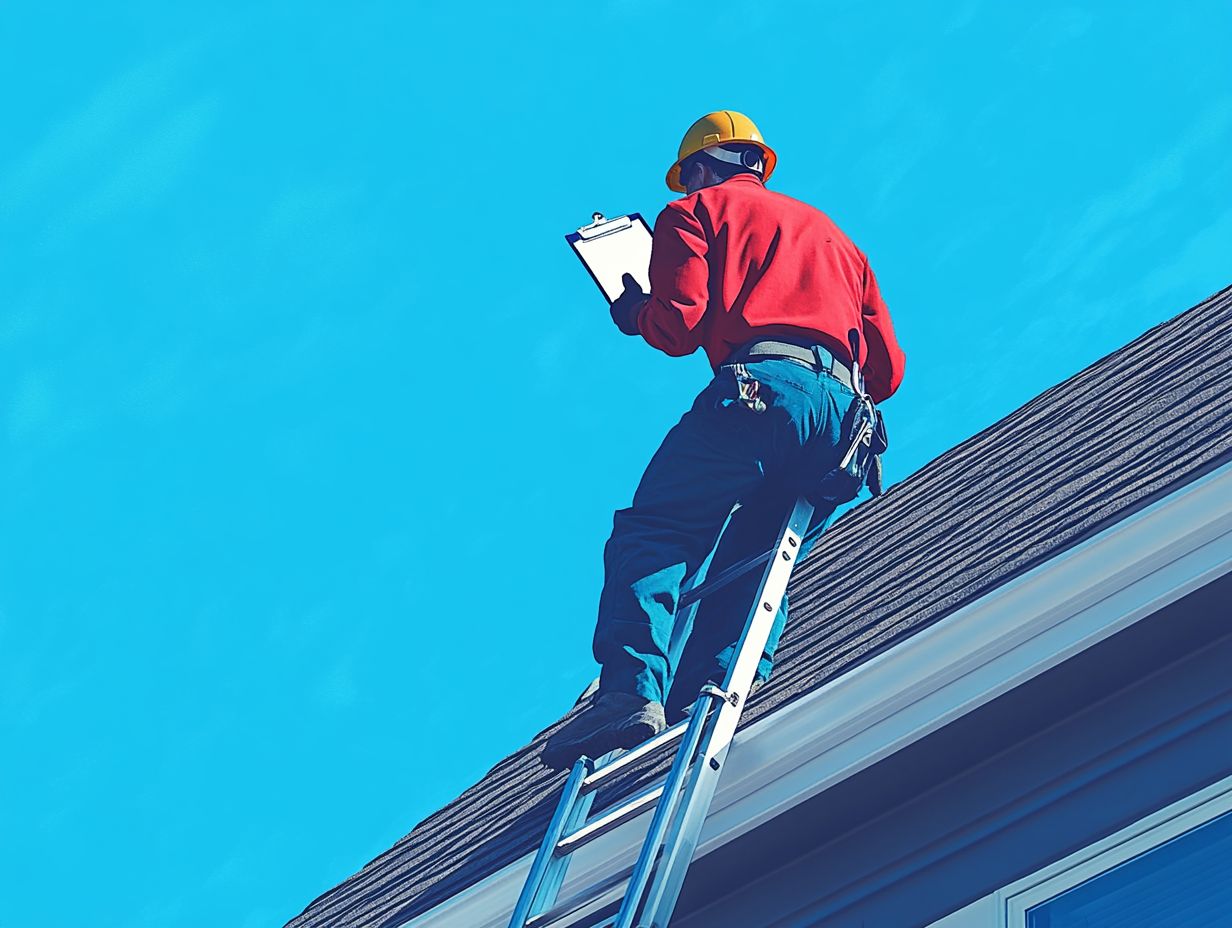
Home inspections fall into two main categories: general inspections and specialized inspections.
Each type is tailored to evaluate distinct aspects of a property’s condition and ensure compliance with property standards.
General Inspections vs. Specialized Inspections
General inspections offer you a comprehensive overview of a property’s condition, while specialized inspections zoom in on specific areas of concern, helping you pinpoint potential problems with precision.
These two types of evaluations play distinct yet complementary roles in your home-buying journey. A general inspection typically assesses the overall condition of the home, checking structural elements, electrical systems, plumbing, and roofing.
This thorough analysis provides you with a clear understanding of any immediate issues and overall maintenance needs.
On the other hand, specialized inspections such as pest inspections, radon testing, or roof certifications delve deeper into specific issues that a general inspection might not cover fully.
Start your journey with a general inspection to unlock the true potential of your future home! Together, these evaluations empower you to make informed decisions about your investment.
What Home Inspectors Look for
Home inspectors carefully check various facets of a property, scrutinizing essential home systems and structural elements.
Their thorough assessments aim to uncover safety concerns and significant issues that could impact the overall safety and functionality of your home.
Common Areas of Inspection
Common areas you ll want to inspect include the roof, foundation, electrical systems, plumbing systems, and Heating, Ventilation, and Air Conditioning (HVAC) systems all vital for your home s safety and functionality.
These components are essential not just for a comfortable living environment, but also for maintaining the property s structural integrity.
During an inspection, professionals take a detailed look at each area to spot any potential hazards or deficiencies that could pose risks to you or lead to costly repairs in the future.
The condition of the roof affects water drainage and insulation, while the stability of the foundation is crucial for the overall durability of your home.
Ensure that electrical and plumbing systems comply with safety standards to prevent accidents, and that the HVAC system maintains air quality and temperature control for your health and comfort.
A thorough inspection process considers all these factors, providing you with a comprehensive assessment that ultimately impacts your property’s market value and the safety of its residents.
Interpreting the Inspection Report
Interpreting the inspection report is an essential step in your home buying journey. This document not only details the findings from the inspection but also offers valuable guidance on necessary repairs and potential contingencies you may want to consider as a buyer.
Understanding the Findings and Next Steps
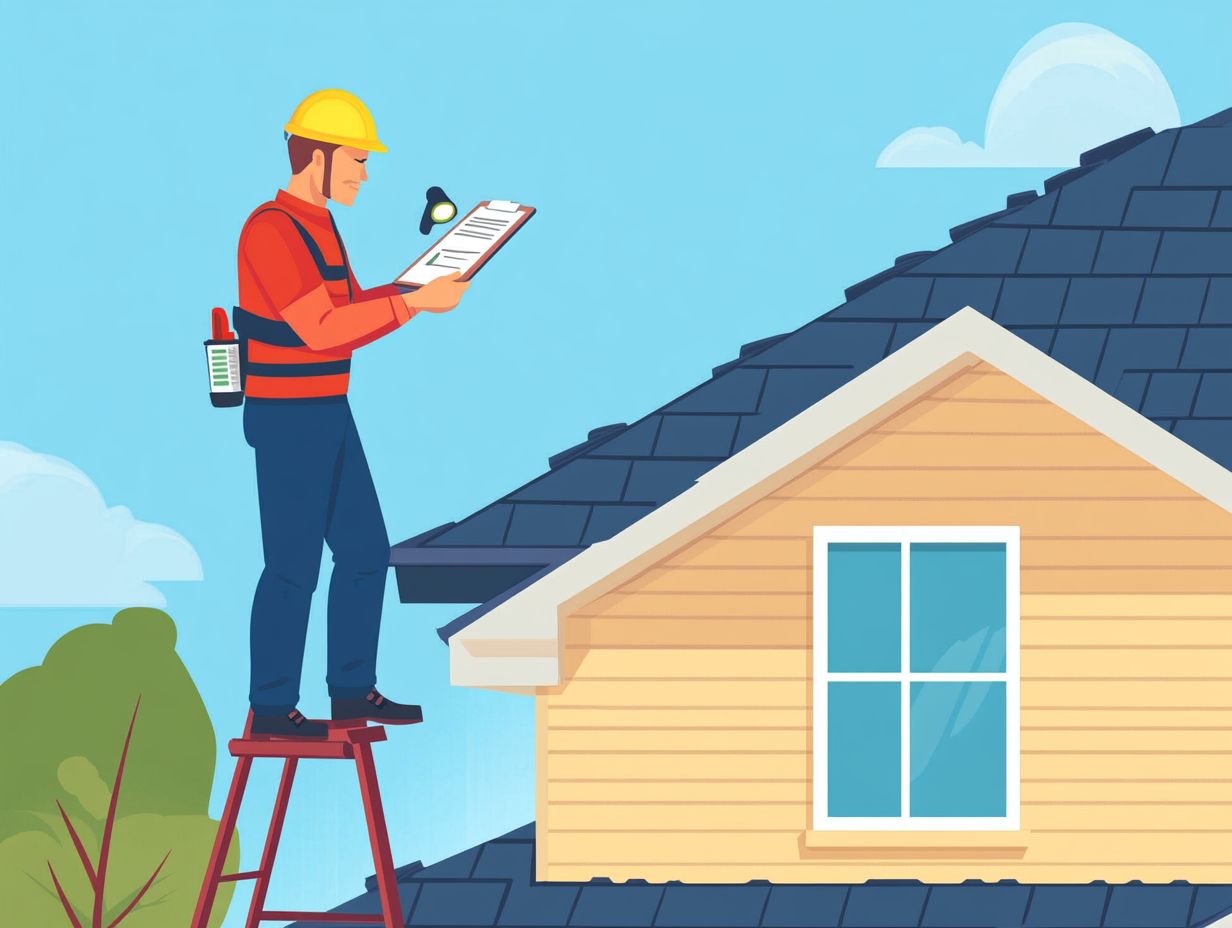
Understanding the findings of an inspection report is vital for you as a homebuyer. It not only reveals any necessary repairs but also plays a pivotal role in shaping the negotiation process with the seller.
A comprehensive inspection summary highlights potential concerns within the property, empowering you to make informed decisions about the negotiations that lie ahead.
These findings act as leverage when discussing necessary repairs with the seller, potentially influencing the final sale price or prompting requests for remediation prior to closing.
Evaluate the inspection results carefully, prioritizing urgent issues and approaching the seller with well-founded concerns. Transparent and open discussions can pave the way for a more amicable negotiation process, enabling both parties to reach a mutually beneficial agreement that accommodates necessary repairs while ensuring a smooth transition into homeownership.
Choosing a Home Inspector
Selecting the right home inspector is an essential decision for you as a homebuyer. This choice significantly impacts the quality of the inspection services you receive and the accuracy of the inspection report that follows.
Factors to Consider and Questions to Ask
When selecting a home inspector, you should carefully consider key factors such as the inspector’s certifications, level of experience, and the range of inspection services they offer. These elements can greatly impact the reliability and thoroughness of the home inspection process.
A qualified home inspector does more than just point out visible defects. They also uncover hidden issues that could lead to expensive repairs later on. To check how skilled the inspector is, it s wise to prepare insightful questions.
For instance, asking about their educational background and any specialized training can provide valuable context. Inquiring about the scope of the inspections is equally important. Make sure to find out if they cover plumbing, electrical, and structural components. This will give you a clearer picture of what to expect.
Checking online reviews or asking for references helps you gauge customer satisfaction. Don t hesitate to ask about the inspector’s reporting approach. This will reveal how comprehensively the findings will be communicated to you after the inspection.
Frequently Asked Questions
Why do we need home inspection protocols?
The purpose of home inspection protocols is to outline specific guidelines and procedures that a professional home inspector will follow during a home inspection. Understanding these home inspection standards helps ensure that all components of a home are thoroughly inspected and evaluated in a consistent manner.
Why is it important to understand home inspection protocols?
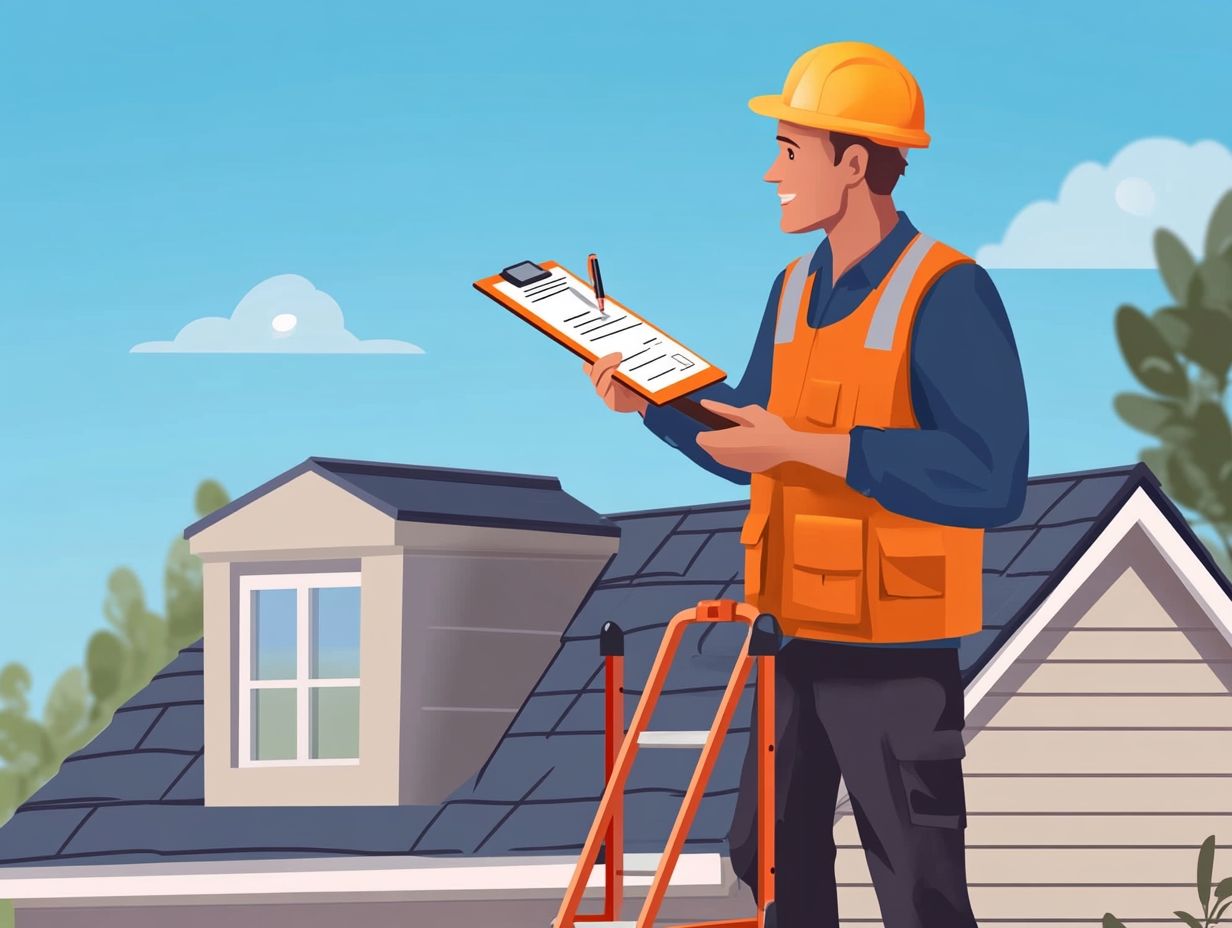
Knowing about home inspection protocols helps you know exactly what to expect. This knowledge empowers you to ask smart questions and make confident decisions when it comes to buying or selling a home, especially when you understand the home inspection process.
What are some common items included in home inspection protocols?
Common items included in home inspection protocols are the exterior and interior of the home, plumbing, electrical systems, heating and cooling systems, roofing, and structural components. For a deeper insight into these aspects, refer to understanding the process of home inspections. Other areas that may be inspected include appliances, insulation, and ventilation systems.
Who typically follows home inspection protocols?
Professional home inspectors follow home inspection protocols as outlined by their governing body or association. Some states and municipalities may have their own specific protocols or regulations for home inspections.
How do home inspection protocols differ from state to state?
Home inspection protocols may differ from state to state due to varying regulations and licensing requirements. Additionally, understanding home inspection standards and practices can help clarify how the type of home and its age may impact the specific protocols followed by a home inspector.
Can homeowners or buyers request specific items to be included in a home inspection?
Yes, homeowners or buyers can request specific items to be included in a home inspection. It is important to communicate any specific concerns or areas of interest to the home inspector before the inspection begins so they can be properly addressed.
